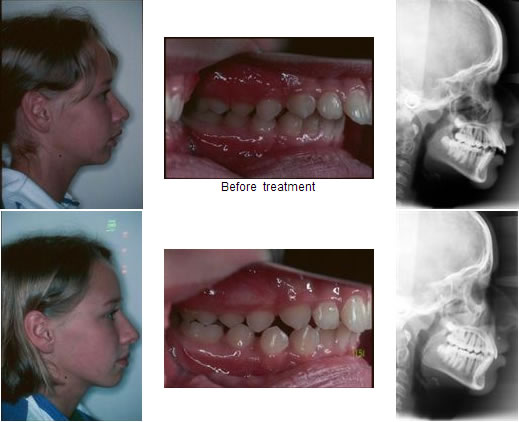Interceptive Treatment
The term “Interceptive treatment” refers to treatment carried out generally in the mixed dentition. This treatment can involve planned extraction of teeth, simple appliances or both. The treatment can be carried out for a variety of reasons:
1. To stop or modify habits which could distort the teeth and jaws.
2. To try and align the permanent teeth as they erupt and thereby avoid the need for more complex (and expensive) orthodontic treatment later on.
3. To improve the alignment of the teeth and jaws such that even if more complex treatment is needed later, the results and the stability of that treatment would be greatly improved.
Case 1 - Quadhelix appliance
Child in the early mixed dentition. The top jaw is narrow in front with not enough space for the lateral incisors to fit and an incisor cross bite.
The OPG radio-graph confirms that all permanent teeth are present and not enough room for the upper lateral incisors to fit.
Treatment with a “Quadhelix” expander.
Once the upper jaw is expanded, if there is still inadequate room for the upper lateral incisors, then we may need to consider extraction of the upper baby canine teeth to provide the space.
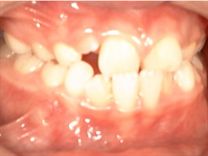

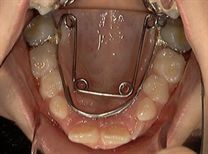
Case 2 - Part Braces
Part braces used to correct an incisor cross bite in an otherwise well aligned mouth. There is a good chance that the permanent teeth will erupt into good alignment now without further orthodontic treatment.
Pictured: Before treatment , Part Braces, After Treatment.
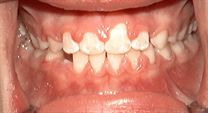
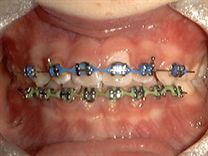
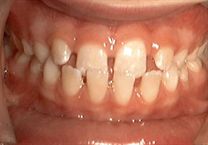
Planned tooth extractions
Child in the mixed dentition, permanent incisor teeth aligned well. However there does not appear to be enough room for the upper permanent canine teeth to fit in. This is confirmed by the OPG radiograph.
Photo taken one year later shows the upper teeth well aligned after a permanent premolar tooth on each side had been extracted, allowing the permanent canine teeth to fit in.
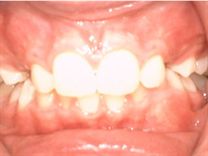

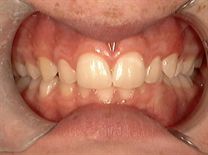
Case 3
Protrusive Incisor teeth corrected with simple plate
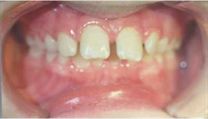
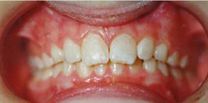
Case 4
Open bite problem corrected with Tongue guard appliance.
Pictured: Severe openbite due to protrusive tongue posture, Tongue guard in place, Permanent incisors erupted into good, position and tongue posture improved.
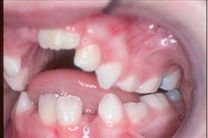
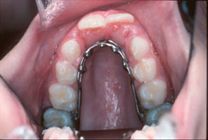
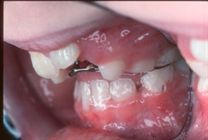
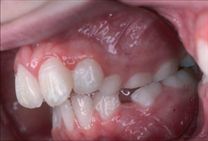
Case 5
Delayed upper central incisor teeth brought down with part braces.
The extra teeth blocking the incisors removed and incisors uncovered at surgery, Teeth aligned with part upper braces., The final photo and radiograph show that the canine teeth are short of space in both top and bottom jaw. Further tooth extractions will be required to make space for the cheek teeth to align properly.
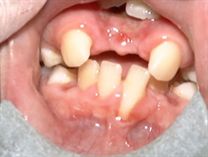

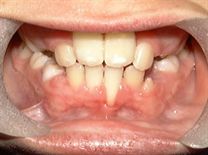

Case 6
Reverse- pull headgear to correct undershot top jaw/overshot bottom jaw relation in a child
Reverse-pull headgear is worn a minimum of 12 hours per day (mainly at night)
This type of treatment appears to work best in the very mild cases. Where there is a significant underlying jaw discrepancy, the success of treatment is highly variable.In this instance, success or failure depends greatly on the nature of the jaw growth which follows. This of course varies greatly from individual to individual.
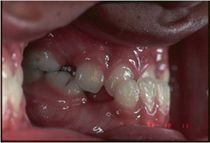
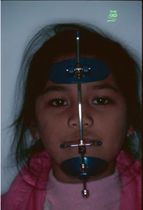
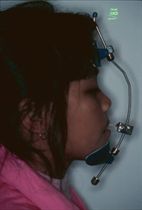
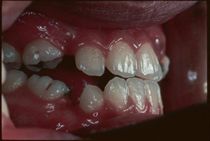
Functional Appliance treatment
This treatment is aimed at correcting severe incisor protrusion and improving the undershot bottom jaw in children during the rapid pre-adolescent growth phase and sometimes in the adolescent growth spurt as well.
